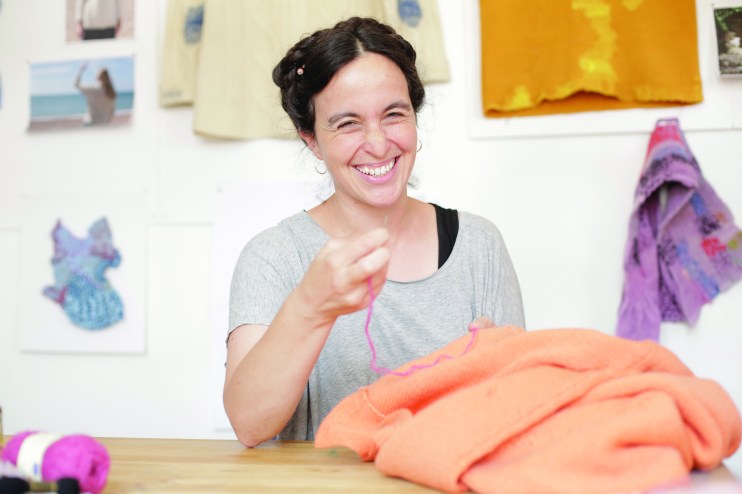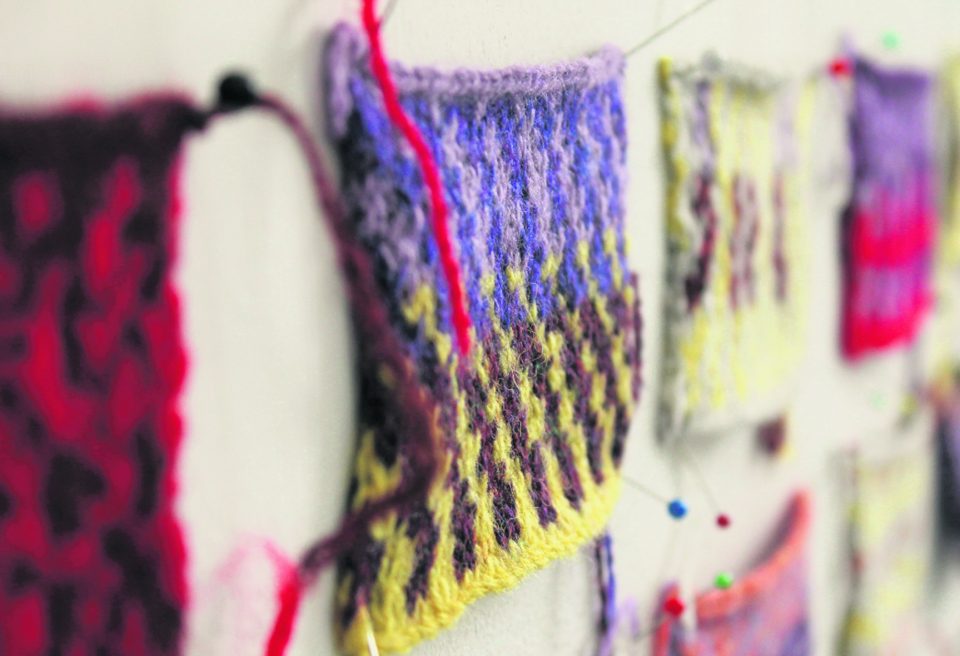Jumper been eaten by moths? Celia Pym will help you turn it into wearable art

Why do moth larvae always eat the good stuff? Many of us will have just rummaged through our winter clothes, only to find that the pesky blighters have left holes in our favourite woollies.
A few years ago I found a beloved John Smedley jumper had been ruined. I took a moth-attacked full-length Paul Costelloe wool winter coat to be invisibly mended as best they could, but it’s never felt the same. A friend has even discovered moth-holes in his armchairs.
But such horrors needn’t spell a death knell. ‘Patching up’, once perceived as thriftiness in a bygone age, is now cool. Visible mending is craft as art.
When textile artist Celia Pym’s visible mending workshop at Messums Wiltshire gallery this summer was announced, it was an instant sell-out. Pym specialises in visible mending, and is a visiting lecturer for the textiles MA at both the Royal College of Art and the University of the Creative Arts in Farnham, as well as the knitted textiles BA at the London College of Fashion.
I like the idea of an imperfect thing, and I always have. It’s often the humble garments that people treasure
Although made from clothing, Pym’s creations are shown as works of art. Her work is currently on display at an influential exhibition in Norway entitled Don’t Feed the Monster! in which 12 designers and artists are showing pieces that address the enormous social and environmental impact of the textile and fashion industries.
Pym’s influence is encouraging us to think positively about damage. If moths spoil our favourite woolly, instead of chucking it out, do we have the courage to think differently, to take the time and learn the skills to repair it and then be proud of wearing its new incarnation?
If we can do this for others – darn a friend’s favourite pair of socks or a child’s toy – this is the sort of random act of kindness that costs nothing, yet gives us personal joy.

“I like the idea of an imperfect thing, and I always have,” Pym says. “It’s often the humble garments that people treasure.”
Pym’s artwork in the Don’t Feed the Monster! exhibition is called Norwegian Sweater, 2010. Originally, Pym chose it from a rag pile of knitwear in Norway collected by the textile designer and weaving teacher Annemor Sundbø. Pym visibly mended it with white wool to give it contrast, a new texture and a new character.
Read more: How graduate designers Goodwaste are creating unique homewares from scavenged marble
“I like contrast,” she says. “With a contrasting darn the thing has changed. Yes, the hole has crept in, the damage has occurred, but it’s a confident move to darn it with contrast – it’s saying, ‘this is the way the thing is now’. Rather than concealing it, it’s bolder and more exciting. With Norwegian Sweater, the white reminds me of snow or of the idea of slow erosion.”
Norwegian Sweater caught the zeitgeist of 2017, as Pym’s entry was a finalist in the inaugural €50,000 Loewe Craft Prize of that year, as well as the BBC Woman’s Hour Craft Prize at the V&A.
Obviously she has the skills as well as the artistic vision, but as a teacher, it’s also about communicating creative mending that’s a passion for Pym.
We might not scoop €50,000, but she can show us how easy it is to get started.
Celia Pym’s next mending workshop is on Saturday 16 November, 2-6pm at Store Store, N1 (£43.60; storeprojects.org). Pym also leads workshops at Loop (loopknittingshop.com) and Ray Stitch (raystitch.co.uk) both in Islington